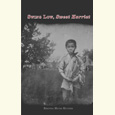A Greener Frequency
Richard Powers’s latest novel, The Overstory, lets readers listen in on the voices of trees
On the opening page of his novel The Overstory, Richard Powers introduces one human character—identified only as “a woman”—and more than a dozen species of trees. Poplars gossip, persimmons bribe, oaks prophesy, hawthorns laugh. Before the human character says a word, the trees speak with a choral insistence: “All the ways you imagine us—bewitched mangroves up on stilts, a nutmeg’s inverted spade, gnarled baja elephant trunks, the straight-up missile of a sal—are always amputations. Your kind never sees us whole. You miss the half of it, and more. There’s always as much belowground as above.”

Powers’s novel is not so hubristic as to believe that human characters can ever see trees whole. Rather, his novel examines what happens when humans simply try to attend to the world and the life around them, to see a little beyond their own immediate needs. Especially in literary novels, people listen mostly to their own inner monologue. Occasionally, maybe, they’ll take advice from human-shaped deities. The Overstory compels its nine main characters and its readers to engage in a different and less human-centric kind of listening, one that grants a voice to trees. It’s a thrilling read—and not just because it features a dramatic storm scene up in a redwood tree, or because several of its characters become arsonists, but because reading this novel often feels like tapping into a new, greener frequency.
Powers also points out how strange it is that the idea of tapping into that green frequency should feel strange at all. A woman living in a platform attached to a redwood tells a doctoral psychology student studying environmental activists, “You’re studying what makes some people take the living world seriously when the only real thing for everyone else is other people. You should be studying everyone who thinks that only people matter.” In this novel, trees don’t only communicate; they also connect readers of The Overstory with a different and more expansive scope of time and history.
As in many of Powers’s earlier novels, The Overstory is filled with the material of the now: the novel also touches on elaborate video games and the data that branches out from our every move online. Yet even within all this twenty-first century stuff, there are strains of fabulism in The Overstory, too, something attuned to myth. One of the most powerful, influential, and intensely lovable characters in the book, botanist and writer Patricia Westerford, is given a bowdlerized translation of Ovid’s Metamorphosis for her fourteenth birthday. The first sentence reads, “Let me sing to you now, about how people turn into other things.” This line repeats through The Overstory as Powers shows how close attention to trees changes his characters into new and more expansive beings.
 Powers himself was changed by trees in writing this novel. In an interview with The Guardian, he said that a research trip to the Great Smoky Mountains made him feel “better than I had ever felt before.” As a result, he gave up his teaching post at Stanford and moved to the mountains of Tennessee. “There’s something about an old growth forest that flies in the face of management and rationality,” he told NPR. “It’s crazy, it’s messy, it’s dynamic, it’s brutal. But once you ease into it, that mess becomes part of the beauty.”
Powers himself was changed by trees in writing this novel. In an interview with The Guardian, he said that a research trip to the Great Smoky Mountains made him feel “better than I had ever felt before.” As a result, he gave up his teaching post at Stanford and moved to the mountains of Tennessee. “There’s something about an old growth forest that flies in the face of management and rationality,” he told NPR. “It’s crazy, it’s messy, it’s dynamic, it’s brutal. But once you ease into it, that mess becomes part of the beauty.”
There’s a sense of beautiful messiness in The Overstory, too. While the novel is arranged into four main arboreal sections–Roots, Trunk, Crown, Seeds—we see on the page the complexity of these sections, how characters come together and branch apart, the surprising ways they interweave through the power the forest begins to have over them. Patricia Westerford tells her students that “millions of cells may shape a single leaf. A million leaves rustle in a single glorious ginkgo. Too many zeros: their eyes glaze over. She must shepherd them back over that ultrafine line between numbness and awe.”
Dancing over that line is one of the tasks Powers sets himself, too, not just through the scope of The Overstory’s subject but through the huge number of human characters who race through these pages. The risks of such a project—the sense of overwhelming or numbing the reader—are great. But so are the rewards.
When science and art collide, a new and potent sense of awe can emerge. Powers traffics in that awe, and The Overstory’s fabulist strains wind up transforming the reader, too, much as the line from Ovid’s Metamorphosis promises. In the end, I felt as though I had inhabited the perspective of something non-human, something with a different sense of time and of life. Including the trees in my own backyard.

Lee Conell’s debut collection Subcortical recently won The Story Prize Spotlight Award. Her fiction has appeared in places like Kenyon Review, Guernica, Glimmer Train, and American Short Fiction. She earned her M.F.A. at Vanderbilt University and lives in Nashville.


